Are you thinking of taking your home security to the next level? Installing a lock on your cabinets is a great way to protect valuables and sensitive items within them.

Whether you’re installing a new one or replacing an old one, the process is relatively simple. Always wear protective gear such as gloves and safety glasses when installing cabinet locks. If you are ready to install a cabinet lock, here are the steps on how to install cabinet lock.
With this blog post, we’ll show you how easy it can be to install cabinet locks yourself! We will provide step-by-step instructions and helpful tips to ensure the installation process goes smoothly without any issues. So read on if you’re ready to add more security to your cabinets today!
What are the Benefits of Installing a Cabinet Lock?
The primary purpose of a cabinet lock is to keep your valuables and sensitive items safe and secure. By installing a cabinet lock, you can ensure that only authorized users have access to these items. Cabinet locks also provide an extra layer of peace of mind knowing that your belongings are safe and secure when not in use.
Additionally, cabinet locks also provide childproofing benefits. They can be used to keep curious little hands out of cabinets and drawers that contain potentially hazardous items like cleaning supplies or medications. Finally, cabinet locks are relatively easy to install and will make your home more secure in the long run.
A cabinet lock is an easy and effective way to secure your home.
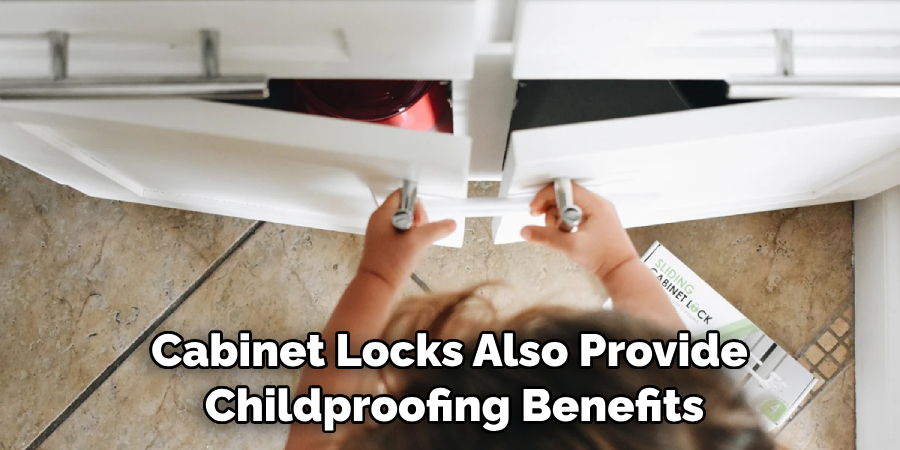
What Will You Need?
Before getting started, make sure that you have the necessary tools on hand to install the cabinet lock. You will need the following:
- A drill
- Drill bits
- Screwdriver
- Cabinet lock kit (includes screws and keys)
Once you have these items, you can begin the installation process.
10 Easy Steps on How to Install Cabinet Lock
Step 1: Prepare the Cabinet Lock
Start by preparing the cabinet lock before installation. Carefully unpack all of the components from the kit and check them against each other. Ensure everything is there – including screws, keys, and any other necessary items.
Step 2: Determine Where to Place the Lock
Next, you’ll need to determine where you want the lock placed on the cabinet. Make sure it will fit securely and is out of reach for small children. You may also want to consider installing multiple locks for extra security.
Step 3: Mark the Location of the Lock
Once you have determined where to place the lock, use a marker or pen to mark its exact location on the cabinet. This step will help ensure you install the lock in the right spot. As you mark the location, make sure to leave enough room for the lock and keyhole.
Step 4: Drill Holes for Lock Installation
Using a drill bit appropriate for your cabinet material, create two holes where the lock will be installed. To ensure accuracy, use the marked lines as a guide while drilling. Use a smaller drill bit to create pilot holes before moving on to the next step.
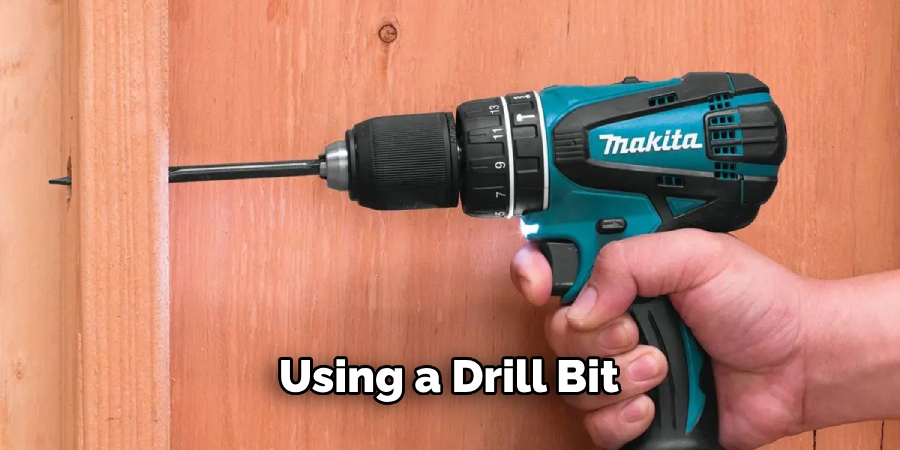
Step 5: Insert Lock Bolts
Once you have drilled the holes, insert the lock bolts into the holes and fasten them securely using the screws provided in your kit. Make sure to tighten them properly so they don’t come loose over time. Remember to attach the keyhole cover as well.
Step 6: Secure Lock Plate
Next, place the lock plate on top of the bolts and secure it with another set of screws from your kit. Tap each screw lightly until its head is flush with the plate to avoid any damage to its finish. Additionally, it is important to ensure that the lock plate is properly aligned before tightening the screws.
Step 7: Install Strike Plate
After securing the lock plate, install the strike plate directly across from it. The strike plate should be mounted onto the cabinet so the two plates line up perfectly when the door closes. Moreover, ensure the strike plate is properly aligned before securing it with screws.
Step 8: Test the Lock
After installing the lock and strike plates, test them by inserting a key into the keyhole and turning it clockwise. If they work properly, proceed to the next step. If not, make sure to check your installation for any errors or misalignments before moving on.
Step 9: Lubricate Lock
Once you’ve confirmed everything is working correctly, lubricate your lock using a suitable lubricant such as WD-40 or graphite powder. This will help ensure that the lock won’t corrode or seize up over time. Keep in mind that there may be certain types of locks that shouldn’t be lubricated.
Step 10: Clean Up
Finally, make sure to clean up any dust or debris created during the installation process. If you find any screws or nuts lying around, put them back in their respective places before closing the cabinet door and testing your newly installed lock again. Remember, safety is key!
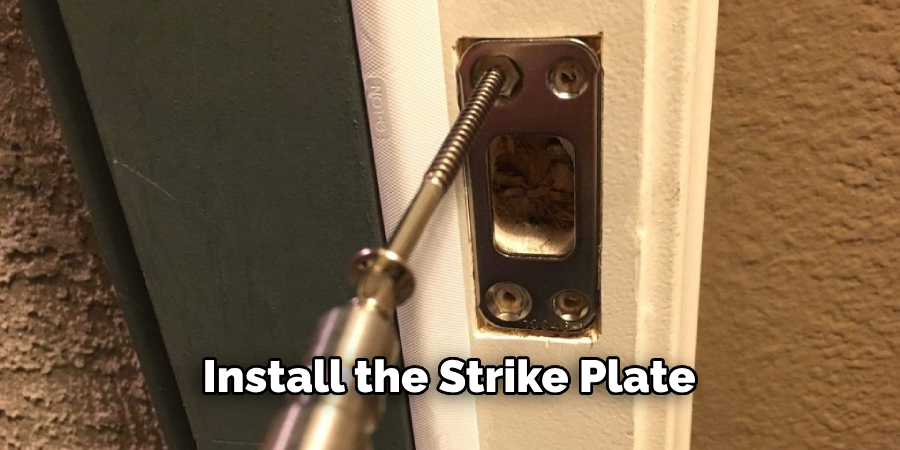
Following these steps, you should now have a secure cabinet lock installed and ready to use. Congrats! You can rest easy knowing your valuables and sensitive items are safely locked away.
5 Additional Tips and Tricks
1. Install the Cabinet Lock: If possible, install the cabinet lock before hanging the cabinets. This will make the installation process much easier and guarantee a secure placement.
2. Check for surrounding obstructions: Ensure that no objects around the lock could interfere with its placement.
3. Measure Twice, Cut Once: Before you make any cuts to the cabinet, measure the door and frame twice. This will ensure accuracy and prevent incorrect measurements or placements.
4. Use a Power Drill When Possible: If your drill has sufficient power, it is best to use it for installation instead of manual tools. This will speed up the process and guarantee a secure fitment for the lock.
5. Install in Pairs: When possible, install two locks on each cabinet—one on either side of the door frame—to increase security and stability.
By following these tips and tricks, you can easily install a cabinet lock and ensure your cabinets remain secure. If you have any questions or concerns, be sure to consult an expert before beginning the installation process. With these steps, your cabinets will be secure and ready for use quickly!
5 Things You Should Avoid
1. Avoid Using Incorrect Tools: Ensure you use the correct tools for the job, such as a power drill or manual tool, to ensure a secure fitment.
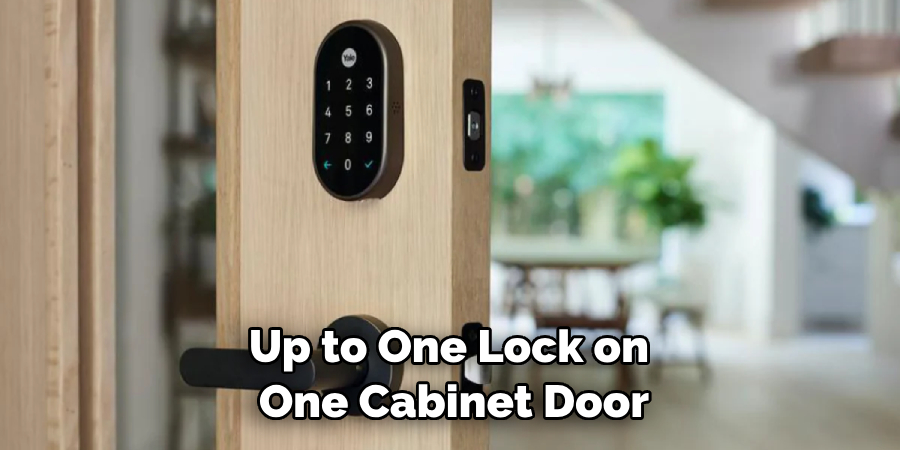
2. Don’t Skip Measurement: Always double-check your measurements before cutting or drilling into the cabinet frame.
3. Refrain From Forcing Too Hard: Don’t force the lock in place if the lock isn’t fitting properly. Instead, adjust your measurements and re-drill if necessary.
4. Steer Clear of Overlapping Locks: It is recommended to place up to one lock on one cabinet door, as this could weaken security and cause additional stress on the hardware over time.
5. Skip Securing Only One Side of The Lock: It is important to secure both sides of the door frame when installing cabinet locks. Installing locks on one side only could cause them to become loose over time.
By avoiding these common mistakes and taking extra precautions when installing a cabinet lock, you can ensure that your cabinets remain secure. Have fun with your next project, and enjoy the peace of mind that comes from having a secure set of cabinets!
What Kind of Lock is in a Cabinet?
The type of lock you use for a cabinet will depend on your needs and preferences. Many cabinets feature traditional key locks, while others may include combination dials or digital keypads for easy access. No matter which type of lock you choose, make sure it is suitable for the size and weight of the cabinet door. Additionally, consider installing a combination of different locks as extra protection to ensure that your items are always kept safe.
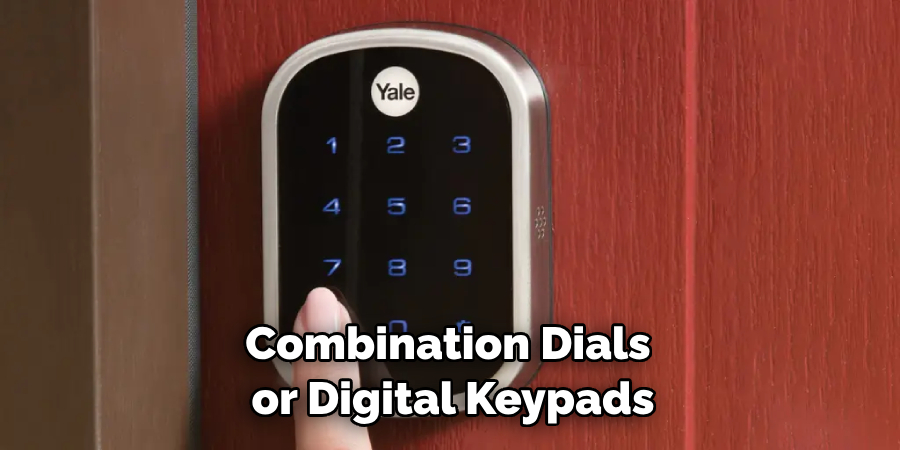
Another important aspect to consider is the material of the lock. Metal locks are more durable and can withstand weather conditions or other wear and tear, whereas plastic locks might be more affordable but less damage-resistant. Whichever type of lock you choose, make sure that it is properly secured and installed in order to provide the highest level of security.
By weighing up different options and selecting the right lock, you can ensure your cabinet is secure against any potential breaches. With careful installation and regular maintenance, you can rest assured that your possessions remain protected at all times!
How Do Cabinet Cam Locks Work?
Cabinet cam locks are an effective solution for securing various cabinets or drawers against unauthorized access. They typically feature a two-piece system, with the main body of the lock connecting to the cabinet or drawer and a keyed cylinder, which provides access to the interior.
When locked, the cam — a small metal disk — moves into place behind the latch plate, preventing it from being opened without having to use a key. To unlock it, you must insert your key into the cylinder and turn it clockwise until you hear a click sound as it unlocks. Once unlocked, you can simply pull out the handle and open the cabinet door or drawer.
Cabinet cam locks offer easy installation and require minimal maintenance. They are also relatively inexpensive and provide a high level of security, making them an ideal option for securing cabinets or drawers in residential and commercial settings. With the proper installation and regular inspections, you can ensure that your possessions remain safe from potential intruders!
Conclusion
When it comes to securing cabinets, locks are a must-have, no matter the contents. By implementing a cabinet lock, your possessions will be safeguarded, and you can breathe easy knowing they are secure. Installing a cabinet lock is easier than you think, and following these simple steps will help ensure that your possessions stay safe for many years to come.
Whether you choose to invest in a mechanical, electronic, or combination lock is completely up to your discretion. Still, regardless of the type, the security provided by a cabinet lock is essential for any home or business. So go ahead and take back control of your space while adding an extra layer of safety and security for yourself and those around you.
Hopefully, the article on How to Install Cabinet Lock has been informative and helpful. With the right information, tools, and precautions, you can now secure your cabinets with confidence! Good luck, and enjoy the peace of mind that comes from having a safe space to store all your valuables.

